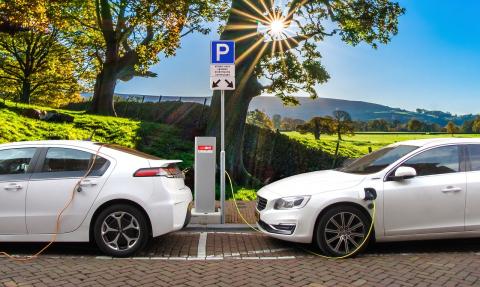In My Next 30 Years… err 15

Going Gasless
California just made a bold move. By 2035 carmakers will be banned from selling new gasoline-fueled vehicles in the state. They’ve got 15 years to phase out the combustion engine.
It’s really not all that surprising after the state’s announcement in June to phase out diesel fuel by mandating an increasing number of semi trucks be ZEV, which will start with 5-9 percent by 2024 with 100 percent by 2045. The UK, France and Canada are also on a path to phase out the combustion engine. Euro 6 goes into effect on January 1, which places varying fuel economy and emissions standards on new vehicles. The rules are different for each brand based on their fleets.
California’s announcement came less than a day after China (the biggest producer of carbon emissions in the world) pledged to be carbon neutral by 2060. While California’s goal is aggressive, lawmakers feel it’s vital to give the industry the push it needs to make it happen. And the hope is that the rest of the country will follow suit.
But is being “gasless” in 15 years even possible?
Well yes and no. Only 8 percent of new vehicles registered this year in California are electric, but technology is rapidly changing. Think of what we’ve done over the past 15 years, and it’s not like we’re starting from scratch. Automakers have some of this tech already. There are plenty of electric cars on the market with more in the pipeline, but they aren’t very efficient and have limited ranges. Plus, they still require electricity, which is produced by burning fossil fuels in varying degrees, partially defeating the purpose of zero emissions in our opinion.
If Europe is an indicator of adoption in California, we may be in trouble. While they’ve had 3 years to prepare for Euro 6, automakers in Europe are calling for an extension as they were unable to sell current models due to Coronavirus shutdowns.
The more superior technology is hydrogen fuel cells. There’s a reason Hydrogen is number 1 on the periodic table beside being the smallest atom. Hydrogen is everywhere, making this type of energy easily sustainable. Consumers would fill up on compressed hydrogen instead of gasoline, meaning it takes minutes instead of hours (*cough* electric cars *cough*). The only “emission” it produces is water vapor. It’s also highly efficient. Not sure how it works? Check out this video that explains it simply.
So why hasn’t it been more widely adopted? Firstly, it needs a refueling infrastructure, although on major interstates in the Northeast one can find natural gas stations used by an increasing number of commercial vehicles. Secondly, fear. Compressed gas is highly flammable and explosive. In June 2019, a chemical plant that supplied hydrogen for fuel cell cars exploded. Days later a hydrogen refueling station in Norway blew up. As a newer technology, obviously safety needs more research; however, we didn’t stop using gasoline in 2010 when the BP explosion happened in the Gulf of Mexico. There are also more than 5000 gas station fires annually in the US alone. There are risks in any fuel decisions.
Where would you put your money? We say fuel cell technology. It’s not only more efficient and sustainable long-term, but it solves the extremely toxic LI battery disposal problem that traditional electric cars create. Plus it emits zero pollutants.
But the real problem with all the EV is that it’s way too expensive for most consumers. The cheapest EV in the US is the Hyundai Ioniq Electric, which starts at $34,000, and that’s after the heavy state and federal incentive programs. A fuel cell electric vehicle starts around $60,000. In a new car market that has already edged out consumers with lower incomes, switching to a ZEV model will perpetuate that trend unless automakers can find a way to make this technology affordable for all.
So, is this aggressive goal possible? Yes maybe... It gives us roughly 30 years before gasoline-powered vehicles are a thing of the past in the Sunshine State. Will more states follow suit? Probably. The auto industry in the developed world could be unrecognizable in 50 years. But let’s see how the next 15 go first.






